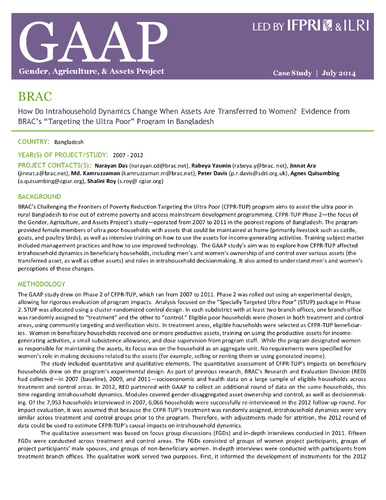How do intrahousehold dynamics change when assets are transferred to women? Evidence from BRAC’s “Targeting the Ultra Poor” program in Bangladesh
Abstract
BRAC’s Challenging the Frontiers of Poverty Reduction Targeting the Ultra Poor (CFPR ¬‐ TUP) program aims to assist the ultra poor in rural Bangladesh to rise out of extreme poverty and access mainstream development programming. CFPR—TUP Phase 2 —the focus of the Gender, Agriculture, and Assets Project’s study — operated from 2007 to 2011 in the poorest regions of Bangladesh. The program provided female members of ultra poor households with assets that could be maintained at home (primarily livestock such as cattle, goats, and poultry birds), as well as intensive training on how to use the assets for income -generating activities. Training subject matter included management practices and how to use improved technology. The GAAP study’s aim was to explore how CFPR¬‐TUP affected intrahousehold dynamics in beneficiary households, including men’s and women’s ownership of and control over various assets (the transferred asset, as well as other assets) and roles in intrahousehold decision making. It also aimed to understand men’s and women’s perceptions of these changes.

